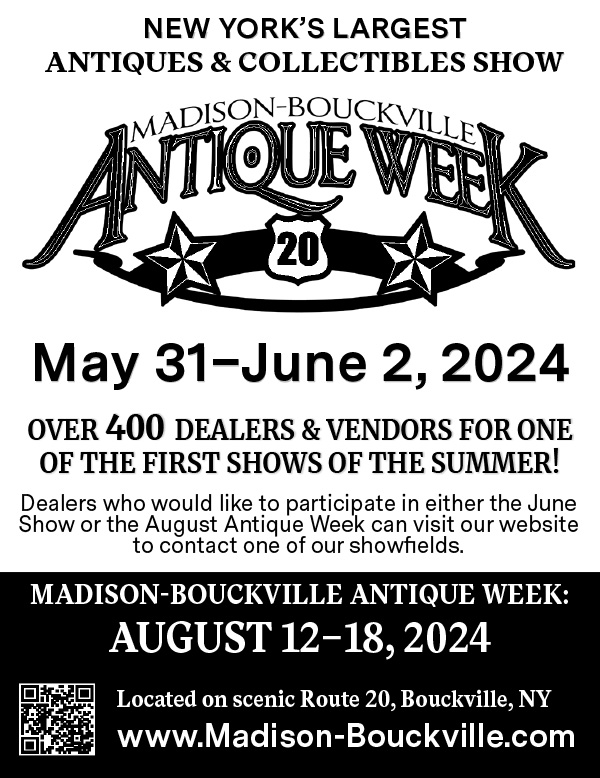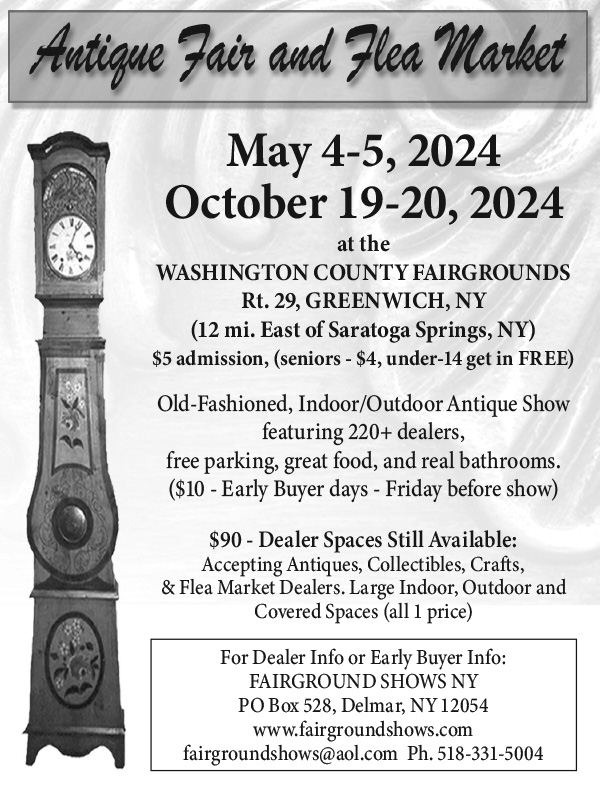Granddaughter Sarah knows my weakness for the various styles of Windsor chairs and she knows that I really don’t need another. So when I talk with her after an auction, she kids me with “Did you buy any Windsors?” Well, I suppose I’ll have to confess that “Hitchcock” chairs were a recent auction purchase.
They aren’t antique, at least by my “standards.” They match the style of the first half of the 19th Century originals, but they are the 20th Century variety, probably from the 1950s. Linda has been a little wary of the Hitchcock-style antique chairs we’ve been using at our dining room table. While we’ve never lost a diner to a chair collapse, I’ve always placed the sturdiest chairs where I think they will be needed. Let’s face it, after 175 years or so of use they may have developed some issues. I call the antique variety we own “Hitchcock-style” because they do not have the maker’s identification stenciled on the back of the seat.
When a set of four rush-seat 1950s Hitchcock chairs was offered at an auction, I bought them very reasonably. The paint needed a little work and the rush seat on one was beyond repair. I touched up the paint on three and moved them to the dining room. They matched the antique variety pretty well, and had the “sturdy” quality needed for seating without fear.
Linda suggested that we see about having the rush seat replaced on the fourth chair. I responded that maybe we’d find a “fourth” at a shop or show. She questioned the thought that one would turn up until we stopped at an antiques mall and found a number of antique Hitchcock-style chairs as well as some 20th Century varieties. I’m sure we could buy a matching one or a set on the internet, but the hunt is a good reason to stop at some shops for something “we need.”
The “fancy chair” of the eighteen-teens period seems to be a transition from the fine cabinet makers’ traditional styles to a colorful chair that would be affordable for a growing number of “middle class” households. Hitchcock apparently recognized the opportunity.
As is the case with some other New England chair makers, Lambert Hitchcock began his enterprise in 1818 by making chair parts and shipping them to other manufacturers. By the 1820s he was making and shipping the entire chair line and was one of the first mass-producers of chairs. The original Lambert Hitchcock business had its ups and downs in the first half of the 19th Century, and there were a number of different stenciled factory names that can help identify the time the chair was marketed.
The original factory shut down in the 1860s. It reopened in the late1940s as part of an “antique revival” and began production again, lasting until 2006. It was again revived in 2010.
The early production of the Hitchcock chair, in a way, was emblematic of the changing times following the 1814 end of the War of 1812. There was a political struggle between new leaders and the “old guard.” The economy was finally free to grow, but also free to succumb to financial mismanagement. Automation and tools had begun to replace the individual craftsmen.
The opening of the Erie Canal in 1825 provided a symbolic and actual boost to the economy. At the celebration of the opening of the Canal in New York City some 200 members of the Chair-Makers Society marched in a parade. The banner they carried depicted a chair that quite likely was a Lambert Hitchcock design. The legend on the banner: “By Industry We Thrive” and “Rest for the Weary.”
Much is said about “creative destruction” and disruptive businesses today. Perhaps the Windsor chair craftsman of 1825 didn’t have much good to say about Lambert Hitchcock.
Grant Hamilton
Publisher




